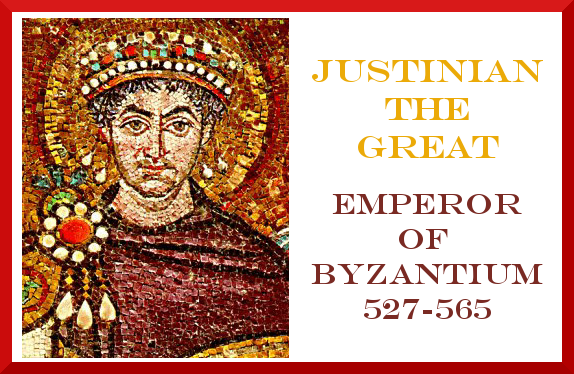
Disclosure: This post contains affiliate links.
For history we have studied Ancient Rome, the fall of Rome, and now Byzantium, both with the help of Heritage History. The most famous of the Byzantine rulers is Justinian the Great, so I limited our study of Byzantium mostly to him. This is a common trait of a Charlotte Mason education — teaching history through stories of the famous characters of the time rather than a dull overview of facts and dates. Narratives and biographies are far more engaging and much easier to comprehend than sweeping overviews. So in this spirit, our study of Byzantium was really a study of Justinian the Great.
Justinian was born on May 11, c. 482 AD, so we are studying him just in time to celebrate his birthday! [For more homeschool lessons based on famous May birthdays, visit Birthday Lessons in May at iHomeschool Network.]
Living Books for Justinian
After an overview in Streams of Civilization, we read selections taken from Heritage History’s Ancient Rome eBook library. I love how this curriculum outlines the periods within Ancient Rome in easy to understand timelines. Further, it lists the chapters from each of the living books that deal with that particular period.
When I wanted to create lessons for studying Byzantium, Heritage History made it easy. I chose two books from the handful offered.
- Famous Men of the Middle Ages, a chapter on Justinian
- The Byzantine Empire, 3 chapters on Justinian
Heritage History doesn’t tell me exactly what and how to teach, but it does show me which books cover the period I want to study. Then I can make the decision. (I love having choices in my homeschool curriculum.)
Then I selected a two part videos series for her to watch:
(Pat one contains some adult content in reference to Theodora.)
Last was the notebooking where Sprite narrated all she had read and heard about Justinian onto some pages I designed. You can find the free printable notebooking pages over at The Notebooking Fairy. We added this map of Justinian’s empire which Sprite labeled with the territories that Justinian took back from the “barbarians.”
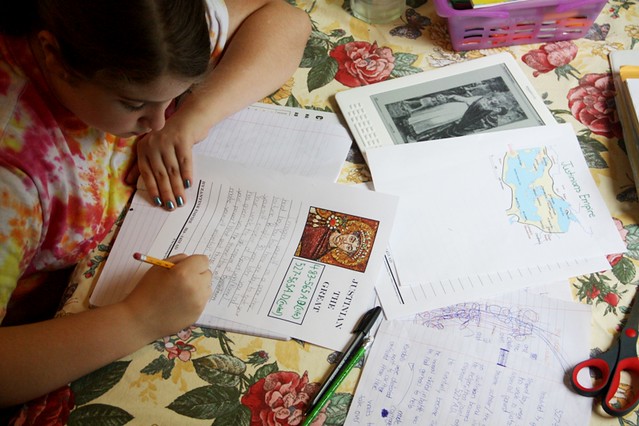
One of the printable pages is a quotation by Justinian, “Rather let the crime of the guilty go unpunished than condemn the innocent.” This quote is a perfect representation of the Justinian Codex, the laws that this ruler instituted and which greatly affected our modern system of law in the West. She had a chance to practice her cursive writing, and we took the opportunity to discuss the meaning behind the quote.
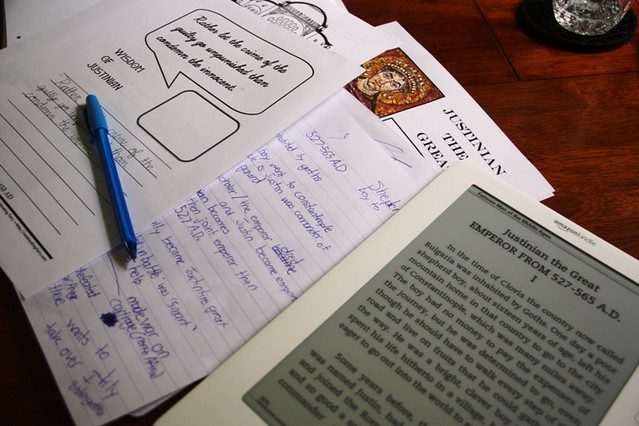
Hagia Sophia
Then we shifted our focus to a famous work of architecture, the Hagia Sophia, built during Justinian’s reign. I always seem to find a way to incorporate art into anything we study. Byzantium was no exception. First Sprite read an overview in the book 50 Buildings You Should Know.
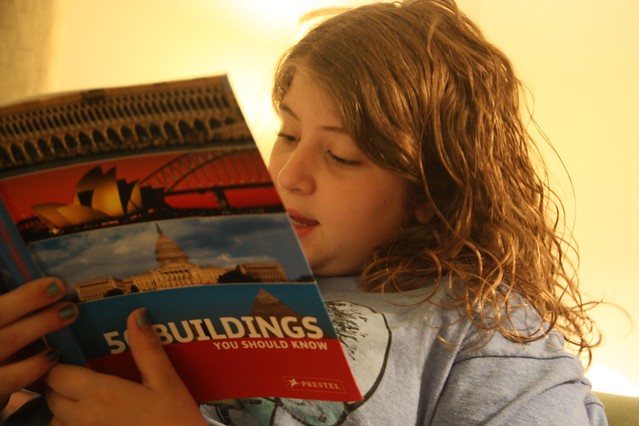
Then she watched this video.
http://youtu.be/6zxRjx4Z5uU
Then she did more narration via notebooking pages (those are also part of the free printables at The Notebooking Fairy).

Byzantium Study
This was not a lengthy history study; it took about a week. But it was enough of a taste of Byzantium to lay a good foundation for the history that comes next. With Sprite wrapping up seventh grade, I find that we do almost no fun hands-on activities anymore. And that seems to be a natural transition to more abstract forms of learning based primarily on reading and writing.
However, we do have a great opportunity for a real life cultural experience that relates to our study of Ancient Rome and Byzantium. The Greek festival at a Greek Orthodox church here in Memphis is going to be a perfect opportunity for us to learn first hand about the history, culture, and religion that we have been studying in our curriculum. The festival includes traditional folk dance, a church tour, and lots of authentic foods. Even if it didn’t coincide perfectly with our studies, we would still go because it’s always good to take advantage of a field trip opportunity.
Homeschool Lessons for Famous People Born in May
If you want more famous personalities to study for May, visit iHomeschool Network for eight more birthday boys ranging from explorers to inventors and physicists to composers.
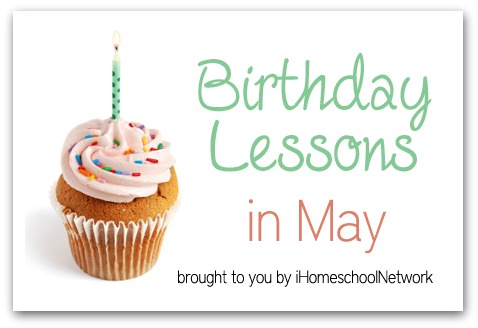
I’m sure this is answered on the site, but I got a little confused trying to look at it all. When you buy a “curriculum” cd you get all the formats of the e-books AND the study guide? Is the study guide what you used to find the chapters that coincided with what you wanted to study? I am really interested in this but I still need it to be a little easy to navigate, although I am like you where I don’t need every detail planned out for me, I want my planning to not be a dreaded chore.
What an excellent resource to share. I had never heard of Heritage History. I love it. You are just full of delightful and insightful information. Thank you for being a good friend to the homeschool mom! Blessings on your week.
This is a cool time period in history. I had the privilege of visiting the Hagia Sophia a few years ago on a trip to Istanbul. It is sooo moving b/c there are Muslim discs (huge) hanging from the ceiling. And they painted over much of the mosaics. Over the past century, they have removed the paint so you can see the beautiful Christian mosaic scenes. I wish I could communicate in words what I saw.
I should post some photos from that trip. Your video brings back memories b/c I was there.
Hey Jimmie…can you tell me more about how you use your Kindle in your homeschool? Also, would you say that your old school Kindle is better than the Kindle Fire? My daughter has a Kindle Touch that she bought after saving and it’s been so great for her. My husband was very skeptical. Now I’m wondering about getting one for the boys to share. I just wonder if the color more tablet features would be beneficial or if it would just be a distraction.
Thanks!
Heather